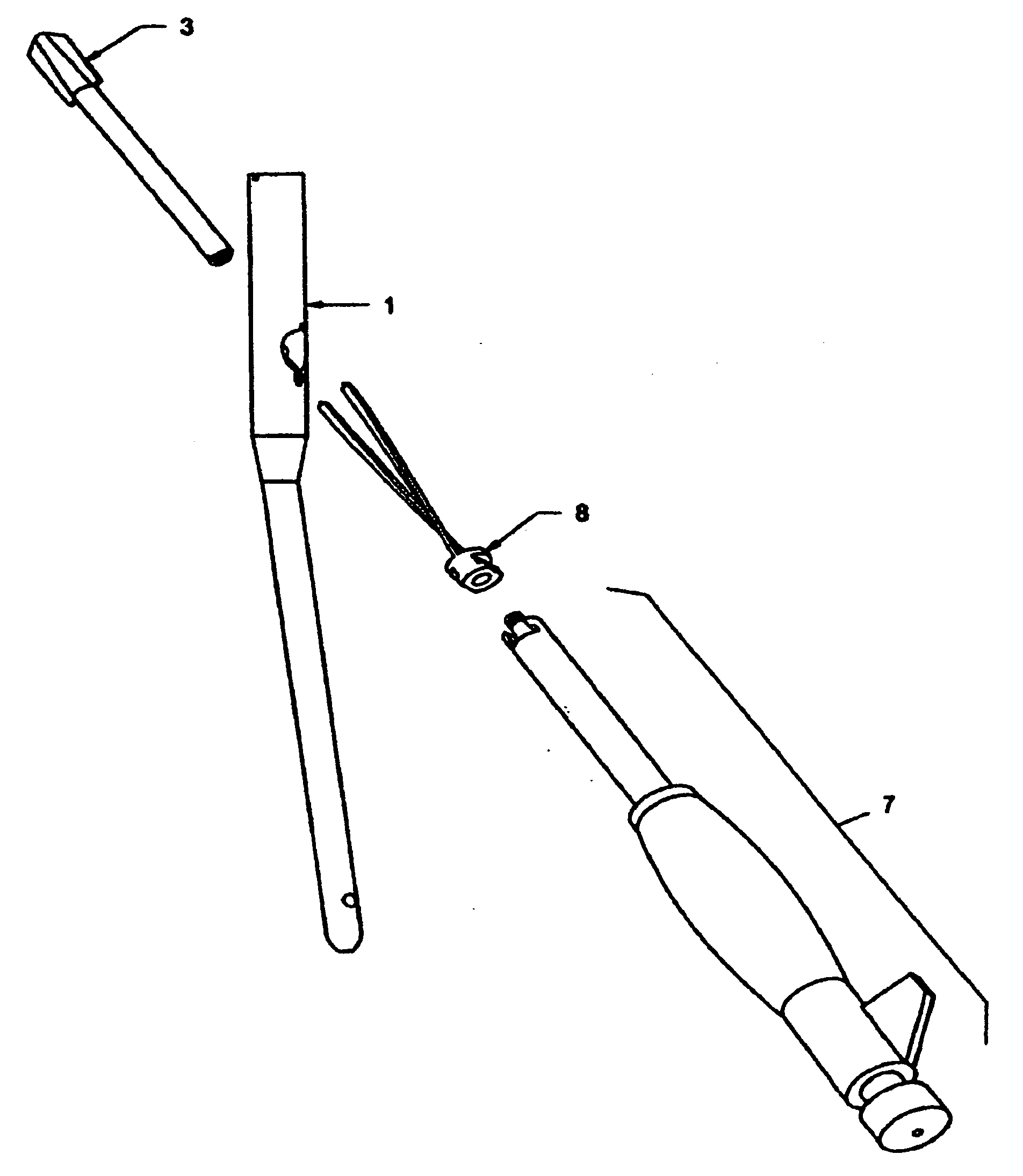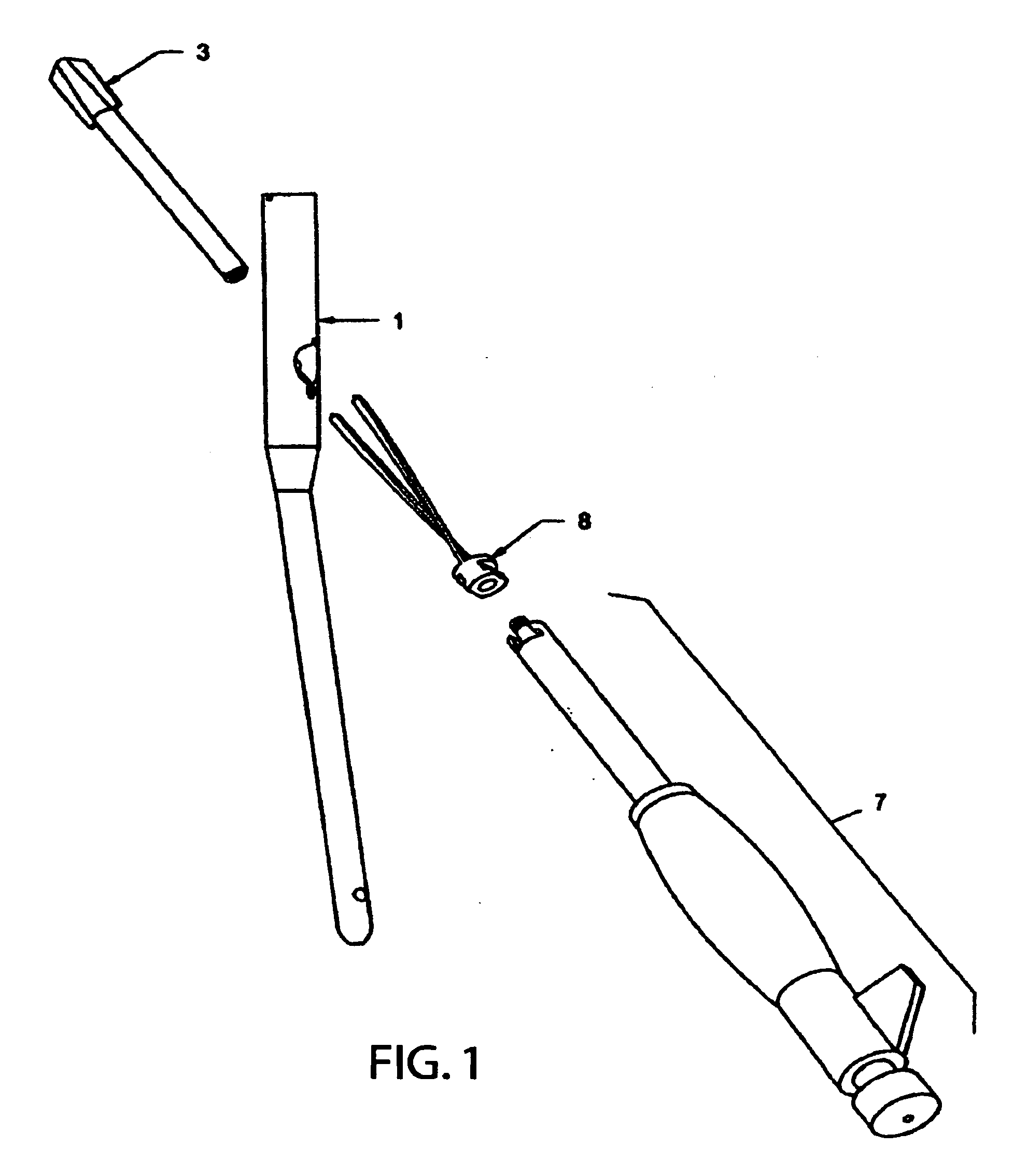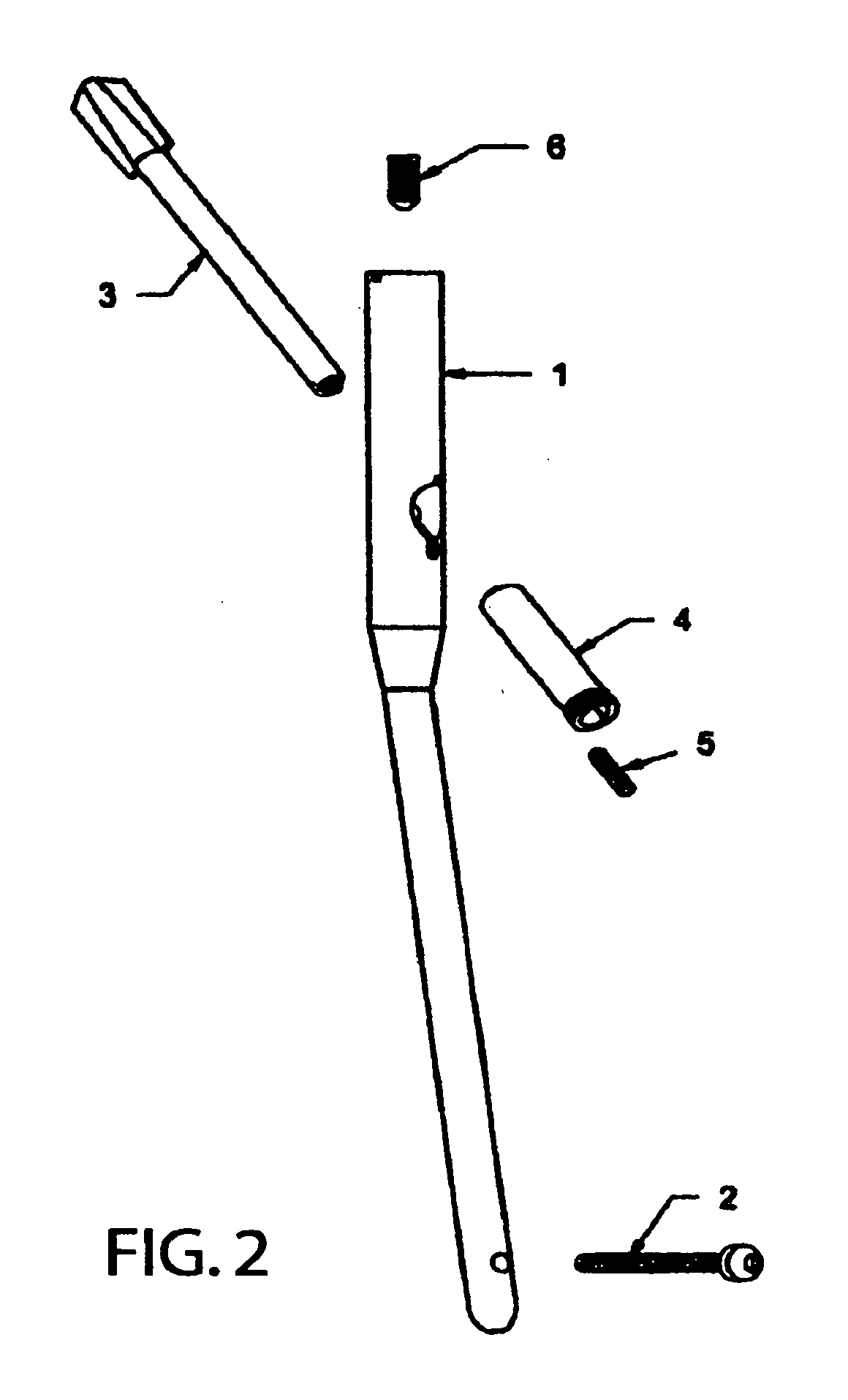Hip Helical Implant
a technology of helical implants and hips, which is applied in the field of hip helical implants, can solve the problems of increasing the risk of bending or breaking the implanted hip nail, nail piercing the surface of the femoral neck or head, and inability to allow the fracture's bone fragments to slide towards each other along the hip nail, etc., and achieves minimal bone loss, easy insertion procedure, and minimal bone loss.
- Summary
- Abstract
- Description
- Claims
- Application Information
AI Technical Summary
Benefits of technology
Problems solved by technology
Method used
Image
Examples
Embodiment Construction
[0051]FIGS. 1 and 2 illustrate individual components of a preferred embodiment of the intramedullary ostesynthetic device, which includes an intramedullary nail 1 with optional distal locking screws 2, a hip helical implant 3, a sliding sleeve 4, a lateral set screw 5, and an optional coaxial set screw 6; as well as an insertion tool 7 and a step helix 8. The insertion tool 7 and step helix 8 may be used during the insertion procedure.
[0052]FIGS. 3 to 3B illustrate a preferred embodiment of the hip helical implant 3, which consists of a front helical portion 11, and a rear smooth shaft 9. The frontal helical portion 11 is provided of at least two helically twisted blades 10, which are attached to the axis of the front helical portion 11 that has a truncated conical shape. Additional blades are contemplated. Each blade 10 is provided with a hole 12 at its rear end, designed to receive the pegs 30 located at the frontal ends of the step blades 28 of the step helix 8 (FIG. 7), in order...
PUM
 Login to View More
Login to View More Abstract
Description
Claims
Application Information
 Login to View More
Login to View More - R&D
- Intellectual Property
- Life Sciences
- Materials
- Tech Scout
- Unparalleled Data Quality
- Higher Quality Content
- 60% Fewer Hallucinations
Browse by: Latest US Patents, China's latest patents, Technical Efficacy Thesaurus, Application Domain, Technology Topic, Popular Technical Reports.
© 2025 PatSnap. All rights reserved.Legal|Privacy policy|Modern Slavery Act Transparency Statement|Sitemap|About US| Contact US: help@patsnap.com



